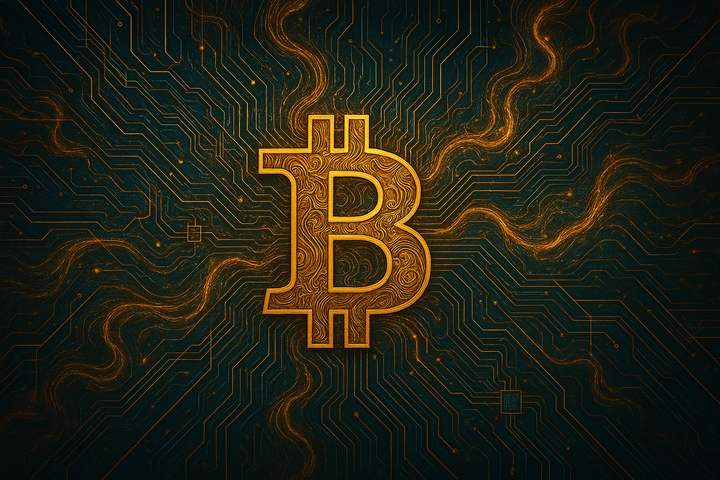Neuromorphic Edge Chips: 100x Speed; 500x Efficiency
The August 15, 2025 episode of Anastasi In Tech features Anastasia explaining a neuromorphic processor, Pulsar, that combines spiking and convolutional neural networks.

- My 'briefing notes' summarize the content of podcast episodes; they do not reflect my own views.
- They contain (1) a summary of podcast content, (2) potential information gaps, and (3) some speculative views on wider Bitcoin implications.
- Pay attention to broadcast dates (I often summarize older episodes)
- Some episodes I summarize may be sponsored: don't trust, verify, if the information you are looking for is to be used for decision-making.
Summary
The August 15, 2025 episode of Anastasi In Tech features Anastasia explaining a neuromorphic processor, Pulsar, that combines spiking and convolutional neural networks. She claims 100x speed and 500x energy gains over conventional chips for on-device vision and audio tasks. The discussion highlights edge applications alongside barriers such as analog scaling limits, cost-sensitive markets, and immature software.
Take-Home Messages
- Energy Efficiency: Event-driven spiking cores promise 500x lower energy for sensor workloads.
- Hybrid Design: Pairing SNNs with CNNs targets real-time vision and speech at the edge.
- Scaling Limits: Parasitic effects constrain growth beyond ~1,000 analog neurons today.
- Market Reality: Price-sensitive microcontroller markets and entrenched incumbents shape adoption.
- Software Gap: Tooling and workflows lag, slowing developer uptake and deployment.
Overview
Anastasia introduces Pulsar, a 3 mm neuromorphic chip from Innatera that emulates brain-like computation. She contrasts event-driven spikes with clocked digital logic to explain why power falls while responsiveness rises. The claim centers on 100x speed and 500x lower energy relative to traditional chips.
She describes a hybrid architecture that pairs a spiking core with a digital CNN engine for pattern recognition. The design targets edge workloads such as image recognition and speech processing close to sensors. She argues that on-device inference reduces cloud dependence and latency.
Anastasia notes current limits, including an analog core with roughly 1,000 neurons. She warns that parasitic effects impede scaling larger spiking networks and can reduce precision. These constraints cap ambitions to approach biological complexity.
She situates the chip in a crowded, price-sensitive microcontroller market. Incumbents already add AI features, so differentiation and cost control are pivotal. Anastasia expects near-term wins in robotics, factory automation, and IoT while software tooling remains a bottleneck.
Stakeholder Perspectives
- Edge device manufacturers: Evaluate cost, power, and accuracy trade-offs versus incumbent microcontrollers with AI options.
- Semiconductor incumbents: Monitor neuromorphic startups while extending AI features across existing portfolios.
- Robotics and industrial firms: Seek reliable, low-latency perception without cloud dependence for autonomy gains.
- Developers and tooling vendors: Need accessible SDKs, model conversion, and debug workflows for spiking systems.
- Cloud providers: Assess workload shifts from centralized inference to on-device processing at the edge.
- Policymakers and regulators: Consider energy efficiency, safety certification, and data governance for pervasive sensing.
- Investors and integrators: Map viable niche beachheads where performance-per-watt beats commodity alternatives.
Implications and Future Outlook
Neuromorphic chips could cut energy budgets for edge sensing while improving responsiveness. If scaling and accuracy are proven in production, robotics, industrial monitoring, and consumer devices gain immediate benefits. Failure to solve analog scaling would confine deployments to narrow, high-value niches.
Cost and ecosystem will decide winners more than specs. Mature toolchains, model portability, and reference designs can lower integration risk for OEMs. Incumbents that bundle software and support may outcompete novel hardware absent compelling total cost of ownership.
On-device inference reduces data egress and latency, changing privacy and compliance postures. Local processing limits exposure to cloud breaches and network outages, but raises responsibilities for endpoint security. Standards for validation and safety will shape procurement in regulated sectors.
Some Key Information Gaps
- What engineering innovations could mitigate parasitic effects to allow larger neuromorphic networks? Scaling determines whether neuromorphic processors advance beyond niche uses and drives long-term adoption.
- How can neuromorphic chips achieve competitive pricing in cost-sensitive microcontroller markets? Commercial viability hinges on bill-of-materials targets and clear total cost advantages.
- What types of programming tools or frameworks will make neuromorphic chips accessible to mainstream developers? Developer productivity and model portability are prerequisites for broad uptake.
- What role could neuromorphic processors play in advancing robotics and factory automation? Quantifying autonomy, reliability, and energy gains informs capital allocation and safety cases.
- What are the security and privacy implications of shifting inference from cloud to device? Local processing changes threat models and regulatory obligations for sensitive data.
Broader Implications for Bitcoin
Edge AI and Bitcoin Infrastructure
Pervasive on-device inference can reduce reliance on centralized clouds, aligning with decentralized design preferences common in Bitcoin tooling. Lower-latency, low-power perception enables more resilient hardware in remote or bandwidth-constrained environments, including mining sites. Over time, hardened edge analytics could improve uptime and anomaly detection across mining, custody, and node operations.
Machine-to-Machine Payments
Efficient sensors and robots increase event-driven interactions that pair naturally with small, frequent payments. Bitcoin’s Lightning Network suits low-value, high-frequency machine-to-machine settlements for data, power, or service access. As devices negotiate resources autonomously, standardized metering plus instant settlement can compress operational frictions.
Hardware Supply Chains and ASIC Competition
New chip categories can shift foundry capacity and packaging priorities, indirectly affecting ASIC lead times and costs for miners. If neuromorphic demand grows, capacity allocation at advanced and specialized nodes may tighten. Strategic sourcing and diversified fabrication pathways become more important for mining hardware roadmaps.
Energy Demand Shifts and Grid Flexibility
Ultra-low-power edge compute slightly reduces aggregate compute intensity while multiplying the number of devices. The net effect changes load shapes and may complement miners’ role as flexible demand responding to grid conditions. Coordinated planning can integrate responsive loads with mining to stabilize grids and monetize surplus energy.
Privacy-by-Design in Bitcoin Hardware
Local inference for biometrics, liveness, or anomaly detection enables privacy-preserving authentication flows on custody devices without cloud calls. This supports self-custody norms by minimizing data exposure while improving usability. Threat models must evolve to secure on-device models and resist side-channel leaks.
Regulatory and Safety Standards
As inference migrates to endpoints, certification frameworks will govern safety-critical deployments in finance, energy, and industrial settings. Bitcoin-related infrastructure interfacing with regulated sectors may need demonstrable assurance cases for embedded AI. Clear standards can de-risk procurement and broaden institutional participation.



Comments ()